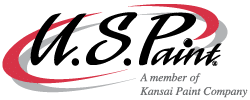Effective Quality Control Practices
Paints and coatings are needed in many different markets, ranging from commercial builders to original equipment manufacturers. Some of these markets are subject to regulations that require testing for compliance. Other times, our clients have more complex specifications to help with everything from safety to aesthetics.
Experts at U.S. Paint use a wide variety of tools and methods to run checks for quality control. These range from simple flow cups to specialized computer systems that ensure high calibration and measurement capabilities.
U.S. Paint measures the viscosity or thickness of paints and coatings to help determine whether a paint needs to be applied using rollers, brushes, spray guns, or other high tech applications. Our end user needs to know viscosity to, in turn, apply paint evenly over what are sometimes uneven surfaces. There are a number of viscometers of varying degrees of sophistication that measure viscosity and U.S. Paint strives for quality in testing.
Our experts also measure the specific gravity of paints and coatings to determine their density. This is expressed in terms of weight per gallon. Density is the ratio of solid raw materials that make up the solution. It can be affected by improper thinning, environmental conditions, and improper mixing ratios. We use pyknometers which are pressure density cups that test the resistance of a paint solution to cracking or detachment from a metal panel.
Another test that can be performed is destructive testing. During the test, panels to match a customer’s needs are sprayed with the coating. The panels are then put in a chamber where humidity or even ultraviolet rays can be applied. Other commonly used tests in the industry might include the Taber abrasion test, a falling sand test, or a cross-hatch adhesion test.
Some of our end markets require a variety of environment-related tests to measure for volatile organic compounds. In order to comply with the Leadership in Environmental Design program (a green building certification program through the U.S. Green Building Council), paints must be tested for a wide range of factors and it requires working directly with the USGB or other consultants. Our tests include water immersion, environmental cycle testing, AutoTech salt fog/ humidity chamber, blue M environmental chambers, and a thermostatic chamber.
Paints and coatings are used for multiple purposes and need to fulfill high requirements. As a result, these complex products need extensive quality control, which demands the use of refined technologies in order to guarantee accurate and reliable analysis. At U.S. Paint, we recognize that every painting environment is not the same, not even close. And during development, this is always kept well in mind. We don’t see resulting products simply as our own, but a culmination of our customer and us. We perform careful evaluations of the painting process and environment, and this information is incorporated into the development of the product, now designed specifically for that environment. We achieve this by reproducing our customer’s conditions in the laboratory.
For a closer look at our extensive testing capabilities click here. We would be pleased to meet with your company to discuss your specific requirements. We’re ready for any project. Call us today!

